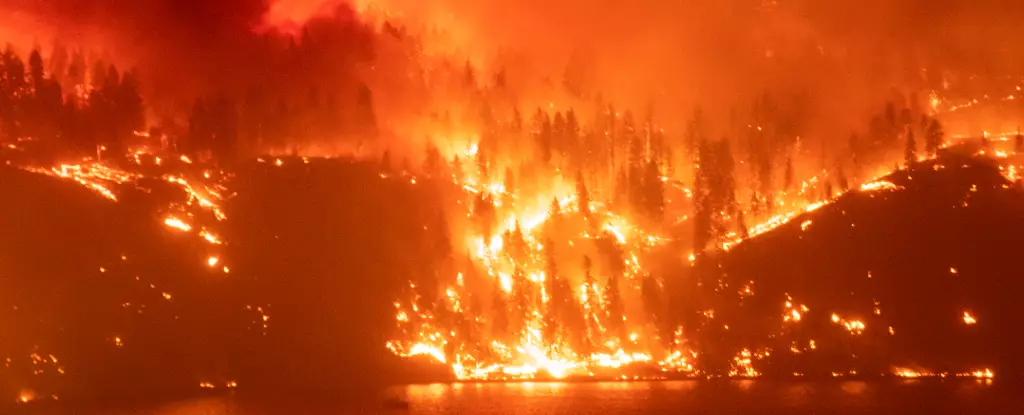Recent wildfires, particularly in Los Angeles, are part of a growing global trend. Fires have ravaged regions far and wide—from the verdant landscapes of Colorado and the southern Appalachians to the breathtaking island of Maui, along with parts of Canada, Australia, Portugal, and Greece. As we grapple with this unprecedented scenario, we might wonder whether we are witnessing a future that is not only bleak but also bizarre, devoid of a clear narrative that connects our past to our present. However, as a historian specializing in fire, I assert that we do possess both a narrative and an analogy for this complex phenomenon.
At the heart of this narrative lies the ancient relationship between humanity and fire, a connection that has influenced our evolution and shaped the very landscapes we inhabit. Meanwhile, the analogy arises from the realization that our collective fire practices have spiraled out of control, leading to an ecological landscape that may resemble an ice age, but for fire.
The story of humanity’s relationship with fire extends back thousands of years, beginning with our control over this natural element around 11,500 years ago, following the last glaciation. As we have evolved, so too has our manipulation of fire. From early forms of burning land to enhance agricultural outcomes to the rampant fossil fuel combustion of today, our practices have resulted in landscapes increasingly receptive to fire. This transformation is not merely a reflection of human ingenuity but stems from historical events, such as the substantial pre-colonial population decline in the Americas. The absence of managed fires allowed forestlands to flourish, leading some scholars to contend that this shift may have contributed to the climate dynamics that initiated the Little Ice Age.
However, our capacity to regulate fire has encountered significant limits. For over 420 million years, ecosystems have coevolved with fire, fostering balances that would govern the interplay between life and flame. Yet, the rapid advancement in fossil fuel usage has exacerbated these dynamics. The introduction of an entirely new fire regime that can ignite at any time and in any location has extended beyond ecological tolerances, pushing our atmosphere to its breaking point. Simultaneously, the widespread reliance on fossil fuels has altered our interaction with the landscape itself, organizing our cities, agricultural practices, and energy production in ways that disconnected us from natural fire dynamics.
As society has transitioned toward reliance on fossil fuels, we have entered a new phase I call the “pyric transition.” This shift is characterized by the juxtaposition of natural wildfires, which affect our living landscapes, and industrial fire—a countermeasure containing mechanical elements such as engines and aircraft designed to combat uncontrolled blazes. These two realms of fire interact in increasingly complex ways, resulting in circumstances where they can be at odds or collaborate, often with deadly consequences.
This phenomenon isn’t solely a modern concern; the awareness of the implications behind changing land use and fire practices began to surface even before the late 20th century’s emphasis on climate change. The U.S. land management agencies had already recognized the adverse outcomes of fire suppression—initiated over 50 years ago and fueled by conservation ideologies. Despite their efforts, we’ve seen an alarming increase in destructive wildfires, as removing natural fire dynamics has exacerbated the potential for catastrophic fires due to fuel accumulation.
Moreover, it’s crucial to understand that fire is not spurred by any single variable. Rather, it synthesizes its environment, reacting and adapting to climate shifts, landscape configurations, and other legacies of human activity. The debate over whether land use or climate change is the more significant factor in driving wildfires is misguided; both stem from our collective pivot to a fossil-fuel-based society.
As megafires become more commonplace, their destructive potential supports a theory that Earth is entering what can be identified as the “Pyrocene.” This epoch echoes the characteristics of ice ages—complete with analogous phenomena such as massive wildfires linked to changing climate, shifted biogeographical patterns as species migrate, and the overall disruption of our ecosystems.
Throughout history, humanity’s mastery of fire has fundamentally transformed our world, yet it has come at a formidable cost. This complex interplay of fire types—those within living landscapes versus those that consume our anthropogenic environments—forces us to reevaluate our roles as the architects of both catastrophe and recovery. We stand on the brink of a critical transition, confronted by a future that aligns more with fire than stability, and we must reckon with our legacy as the keystone species shaping an increasingly fiery Earth.
As we glance toward California and observe the burning landscapes, we must acknowledge the broader implications of our actions. The Pyrocene offers us both a singular challenge and opportunity to rediscover our relationship with fire while understanding that its consequences resonate far beyond our immediate surroundings, challenging us to rethink our planet’s future in light of an era marked by flame.


Leave a Reply